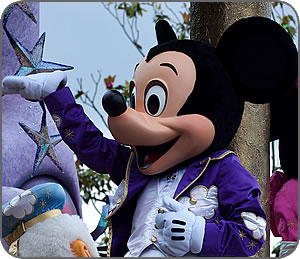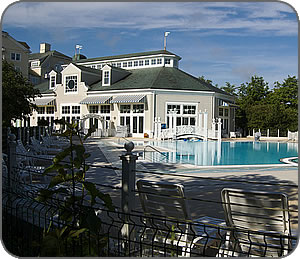About Disneyland Paris
Disneyland Paris is a holiday and recreation resort in Marne-la-Vallée, a new town in the eastern suburbs of Paris, France. The complex is located 32 kilometers (20 mi) from the centre of Paris and lies for the most part on the territory of the commune of Chessy.

Disneyland Paris comprises two theme parks, a retail, dining and entertainment district, and seven Disney-owned hotels. Operating since April 12, 1992, it was the second Disney resort to open outside the United States (following Tokyo Disney Resort) and the first to be owned and operated by Disney. With 15.3 million visitors in the fiscal year of 2008, it is one of Europe's leading tourist destinations.
Disneyland Paris is owned and operated by French company Euro Disney S.C.A., a public company of which 39.78 percent of its stock is held by The Walt Disney Company, 10 percent by the Saudi Prince Alwaleed and 50.22 percent by other shareholders. The senior leader at the resort is chairman and CEO Philippe Gas.
The complex was a subject of controversy during the periods of negotiation and construction in the late 1980s and early '90s, when a number of prominent French figures voiced their opposition and protests were held by French labour unions and others. A further setback followed the opening of the resort as park attendance, hotel occupancy and revenues fell below projections. Partly as a result of this, the complex was renamed from Euro Disney Resort to Disneyland Paris in 1995. In July of that year, the company saw its first quarterly profit.
A second theme park, Walt Disney Studios Park, opened to the public March 16, 2002.
In August 2008, Disneyland Paris was the most visited attraction in Europe.
Background & development
Following the success of Disneyland in Anaheim, California and the Walt Disney World Resort in Florida, plans to build a similar theme park in Europe emerged in 1972. Upon the leadership of E. Cardon Walker, Tokyo Disneyland opened in 1983 in Japan with instant success, forming a catalyst for international expansion.
In late 1984 the heads of Disney's theme park division, Dick Nunis and Jim Cora, presented a list of approximately 1,200 possible European locations for the park.
By March 1985, the number of possible locations for the park had been reduced to four; two in France and two in Spain. Both of these nations saw the potential economic advantages of a Disney theme park and competed by offering financing deals to Disney.

Both Spanish sites were located near the Mediterranean Sea and offered a subtropical climate similar to Disney's parks in California and Florida. Disney had also shown interest in a site near Toulon in southern France, not far from Marseille. The pleasing landscape of that region, as well as its climate, made the location a top competitor for what would be called Euro Disneyland. However, thick layers of bedrock were discovered beneath the site, which would render construction too difficult. Finally, a site in the rural town of Marne-la-Vallée was chosen because of its proximity to Paris and its central location in Western Europe. This location was estimated to be no more than a four-hour drive for 68 million people and no more than a two-hour flight for a further 300 million.
In December 1990, Espace Euro Disney enabled the public to preview the complex.
Michael Eisner, Disney's CEO at the time, signed the first letter of agreement with the French government for the 20-square-kilometer (4,940-acre) site in December 1985, and the first financial contracts were drawn up during the following spring. Construction began in August 1988, and in December 1990, an information centre named "Espace Euro Disney" was opened to show the public what was being constructed. Plans for a theme park next to Euro Disneyland based on the entertainment industry, Disney-MGM Studios Europe, quickly went into development, scheduled to open in 1996 with a construction budget of US$2.3 billion. The construction manager was Bovis.
Hotels, recreation and restaurants
In order to control a maximum of the hotel business, it was decided that 5,200 Disney-owned hotel rooms would be built within the complex. In March 1988, Disney and a council of architects (Frank Gehry, Michael Graves, Robert A.M. Stern, Stanley Tigerman and Robert Venturi) decided on an exclusively American theme in which each hotel would depict a region of the United States. At the time of the opening in April 1992, seven hotels collectively housing 5,800 rooms had been built. By the year 2017, Euro Disney, under the terms specified in its contract with the French government, will be required to finish constructing a total of 18,200 hotel rooms at varying distances from the resort.

An entertainment, shopping and dining complex based on Walt Disney World's Downtown Disney was designed by Frank Gehry. With its towers of oxidised silver and bronze-coloured stainless steel under a canopy of lights, it opened as Festival Disney. On June 20th 2009, Disney World opened its doors to the first Starbucks Coffee in the former location of the Buffalo Trading Post. It would be the first Starbucks opened in any Disney Resort worldwide.
Euro Disney Resort's initial cast members pose.
For a projected daily attendance of 55,000, Euro Disney planned to serve an estimated 14,000 people per hour inside the Euro Disneyland park. In order to accomplish this, 29 restaurants were built inside the park (with a further 11 restaurants built at the Euro Disney resort hotels and 5 at Festival Disney). Menus and prices were varied with an American flavour predominant and Disney's precedent of not serving alcoholic beverages was continued in the park. 2,100 patio seats (30% of park seating) were installed to satisfy Europeans’ expected preference of eating outdoors in good weather. In test kitchens at Walt Disney World, recipes were adapted for European tastes. Walter Meyer, executive chef for menu development at Euro Disney and executive chef of food projects development at Walt Disney World noted, “A few things we did need to change, but most of the time people kept telling us, ‘Do your own thing. Do what’s American’.”
Hotels
The complex features seven Disneyland Resort Paris hotels. The Disneyland Hotel is located over the entrance of the Disneyland Park and is marketed as the most prestigious hotel on property. A body of water known as Lake Disney is surrounded by Disney's Hotel New York, Disney's Newport Bay Club and Disney's Sequoia Lodge. Disney's Hotel Cheyenne and Disney's Hotel Santa Fe are located near Lake Disney, Disney's Davy Crockett Ranch is located in a woodland area outside the resort perimeter.
Disneyland Resort Paris includes six Associated Hotels which are not managed by Euro Disney S.C.A. but provide free shuttle buses to the parks: Marriott's Village d'lle-de-France, Radisson BLU Hotel, Vienna International Magic Circus Hotel (formerly known as Holiday Inn Magic Circus Hotel), Vienna International Dream Castle Hotel, MyTravel's Explorers Hotel and a Kyriad Hotel.
See all hotels near Dysnayland Paris:
Transport
A railway station, Marne-la-Vallée - Chessy, with connection to the suburban RER network and the TGV high-speed rail network is located between the theme parks and Disney Village. Thalys no longer operates from Marne-la-Vallée train station, but there are daily services from London on the Eurostar. On June 10, 2007, a new TGV line, LGV Est, began service between Paris and Strasbourg.
Free shuttle buses provide transport to all Disney hotels (except Disney's Davy Crockett Ranch) and Associated Hotels.
From Wikipedia, the free encyclopedia.
Photos by Emilio del Prado's.